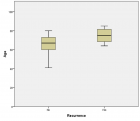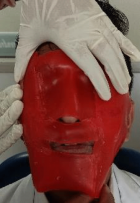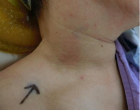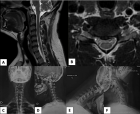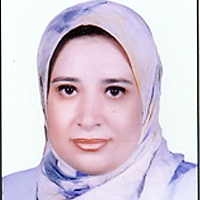About Universal College of Medical Sciences
Universal College of Medical Sciences
Articles by Universal College of Medical Sciences
The body composition analysis: Differences between students and the trend of their change
Published on: 22nd March, 2018
OCLC Number/Unique Identifier: 7493653979
Anthropometric characteristics, represent one of the most important subsystems within the “system” of man, and which can be in affected by physical exercises in the direction of the desired transformation. Very often the anthropometric parameters (height and weight) are used in the assessment of the morphological status of an individual, and on the basis of the results of Body Mass Index (BMI) bring certain estimates and conclusions. BMI as a statistical measures, is used in many public health campaigns as an approximate measure of the ideal body mass and the degree of nutrition of a population. The main goal of the research was to determine and analyze differences in BMI parameters between male and female students, aged 18±0.5 years, and determine the trend of changes. Using the T-test module, the obtained results confirmed that there are statistically significant differences in body height (t=8,17; p<0.001) and body weight (t=5,29; p<0.001), while in BMI values there are not statistically significant differences (t=-0.68, p>0.001). Based on BMI values, a positive trend of somatic changes of both poles is evident.
Glycemic status and its effect in Neonatal Sepsis - A prospective study in a Tertiary Care Hospital in Nepal
Published on: 27th September, 2019
OCLC Number/Unique Identifier: 8278647740
Introduction: Sepsis is an important cause of morbidity and mortality among neonates. Neonatal sepsis can alter the glucose level and both hypoglycemia and hyperglycemia may occur. A high or low blood glucose level may have a significant effect on the outcomes in patients of neonatal sepsis.
Aims: The aim of the study to see the glycaemic status and its effect on outcome of neonatal sepsis.
Material and Methods: This hospital based prospective observational cross-sectional study was conducted in Neonatal Intensive Care Unit in Universal College of Medical Sciences, a tertiary care hospital over a period of 4 months, from May 2019 to August 2019. A total of 220 Neonates suspected sepsis under the age of 28 days admitted in NICU, were studied and included in our study. Clinically suspected neonatal sepsis cases were enrolled in the study. Venous blood was collected before giving any intravenous fluid, dextrose or antibiotics and blood sugar, complete blood counts, CRP levels and blood culture were send to laboratory within half hour of collection. All patients included in this study were treated accordingly and followed up strictly. Blood glucose level and mortality of neonates having hypoglycemia, hyperglycemia were analyzed among CRP and culture positive patients. Quantitative data were expressed as mean and standard deviation. Qualitative data were expressed as frequency and percentage and comparison carried by Chi-square (χ2) test.
Results: A total of 220 patients clinically diagnosed as neonatal sepsis were studied. 118 (53.6%) patients were found CRP positive and 56 (25.5%) patients were blood culture positive. Glycaemic status was analyzed among CRP and culture positive patients. Majority (55.9%) patients were found normoglycemic, 35.5% were found hypoglycemic and 8.6% were found hyperglycaemic in this study. 182 (82.73%) patients were cured and 38 (17.27%) died. Mortality was high in hypoglycaemic patients (34.4%) compared with normoglycaemic patients (9.82%), but the difference was not statistically significant (p > 0.05) between two groups, the mortality was high in hyperglycaemic patients (58.33%) compared with normoglycaemic patients (9.82%) and the difference was statistically significant (p < 0.05) between two groups.
Conclusion: Alteration of glycaemic status occurred in septic newborn. Mortality is higher among the septic newborn with hyperglycemia. The present study found that majority of neonate with sepsis had high mortality rate when blood glucose level were either more than 145 mg/dl or less than 45 mg/dl. This signifies the importance of meticulous blood glucose estimation in cases of neonatal sepsis to improve mortality outcome.
Success Rate and Complications of Endoscopic Deacryocystorhinostomy without Stenting: A Retrospective Study
Published on: 16th April, 2025
Endoscopic dacryocystorhinostomy (EDCR) is a well accepted surgical treatment for patients with nasolacrimal duct obstruction (NLDO). Previously, external dacryocystorhino-stomy was considered as the gold standard treatment for NLDO, however, EDCR has gained momentum due to its several advantages. The EDCR has been sounding more aesthetic and as functional compared to the traditional external dacryocystorhinostomy in the surgical treatment of nasolacrimal duct obstruction with comparable outcomes. Purpose: to determine the success rate and complications of endoscopic dacryocystorhinostomy without stenting.Materials and methods: it was a retrospective study performed in the department of Otorhinolaryngology and Head and Neck Surgery (ORL-HNS), Universal College of Medical Sciences-Teaching Hospital (UCMS-TH) from June 2019 to September 2024. A total of 19 patients charts were reviewed. All the cases were performed under general anesthesia. All the cases had undergone without silicon stenting and were regularly followed up for a period of 3 months. Post operative stomal patency and complications were noted based on subjective and endoscopic evaluation.Results: Out of 19 patients, 12 were female and 7 were male with the age range of 12 to 70 years. Transnasal synechiae was seen in 2 female and 1 male patients. Stomal patency was 100% with no recurrence of epiphora in 17 patients (89.4%) during 3 months of follow up. 2 female patients with released synechiae didn’t come for 3 months follow up.Conclusion: It is a safe and minimally invasive procedure and has a comparable success rate to external DCR with an additional advantage of more aesthetic value.

HSPI: We're glad you're here. Please click "create a new Query" if you are a new visitor to our website and need further information from us.
If you are already a member of our network and need to keep track of any developments regarding a question you have already submitted, click "take me to my Query."






